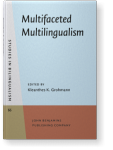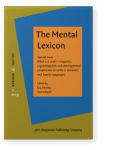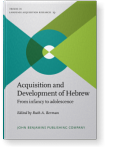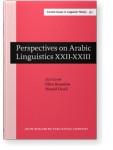Elinor Saiegh-Haddad
List of John Benjamins publications for which Elinor Saiegh-Haddad plays a role.
Articles
2024 Chapter 6. Diglossia and developmental language disorder (DLD) in Arabic: The role of linguistic distance and linguistic proximity? Multifaceted Multilingualism, Grohmann, Kleanthes K. (ed.), pp. 154–183 | Chapter
‘Diglossia’ is a sociolinguistic context characterized by a stable co-existence within the same community of two linguistically related language varieties that are mostly used in different settings/functions. In Arabic, Spoken Arabic (SpA) vernaculars are used for everyday speech whereas… read more
2019 Verbal patterns in Palestinian Arabic What is a verb? – Linguistic, psycholinguistic and developmental perspectives on verbs in Germanic and Semitic languages, Smolka, Eva and Dorit Ravid (eds.), pp. 209–236 | Article
The study examines the distribution of verbal patterns and their semantic-syntactic functions as they are used in spoken narrative text production by adult native speakers of Palestinian Arabic. 30 native Palestinian Arabic adult speakers from Kufur Qareʕ, a village in Central Israel, were shown… read more
2018 Inflectional and derivational morphological awareness in Arabic-speaking High versus Low EFL literacy students Written Language & Literacy 21:2, pp. 147–168 | Article
This paper investigates morphological awareness for inflected and derived words among high versus low literacy students of English as a foreign language in the 5th, 7th and 9th grades. The study experimented with Arabic L1 students and tested inflectional morphological awareness (IMA) and… read more
2016 Metalinguistic awareness in reading Hebrew L2 Acquisition and Development of Hebrew: From infancy to adolescence, Berman, Ruth A. (ed.), pp. 353–386 | Article
The chapter reports on a study that examined the contribution of different types of metalinguistic awareness to word reading and reading comprehension in Hebrew L2 of L1 speakers of Palestinian Arabic. A total of 104 Arabic-speaking students in 4th, 6th, and 8th grade (ages 9–10, 11–12, and 13–14)… read more
2011 Phonological processing in diglossic Arabic: The role of linguistic distance Perspectives on Arabic Linguistics: Papers from the annual symposia on Arabic Linguistics, Broselow, Ellen and Hamid Ouali (eds.), pp. 269–280 | Article
Arabic native speaking children are born into a unique linguistic context called diglossia (Ferguson 1959). In this context, children grow up speaking the specific spoken variety of Arabic used in their immediate environment (hereafter, Spoken Arabic, SpA). At school, they are formally exposed to a… read more




